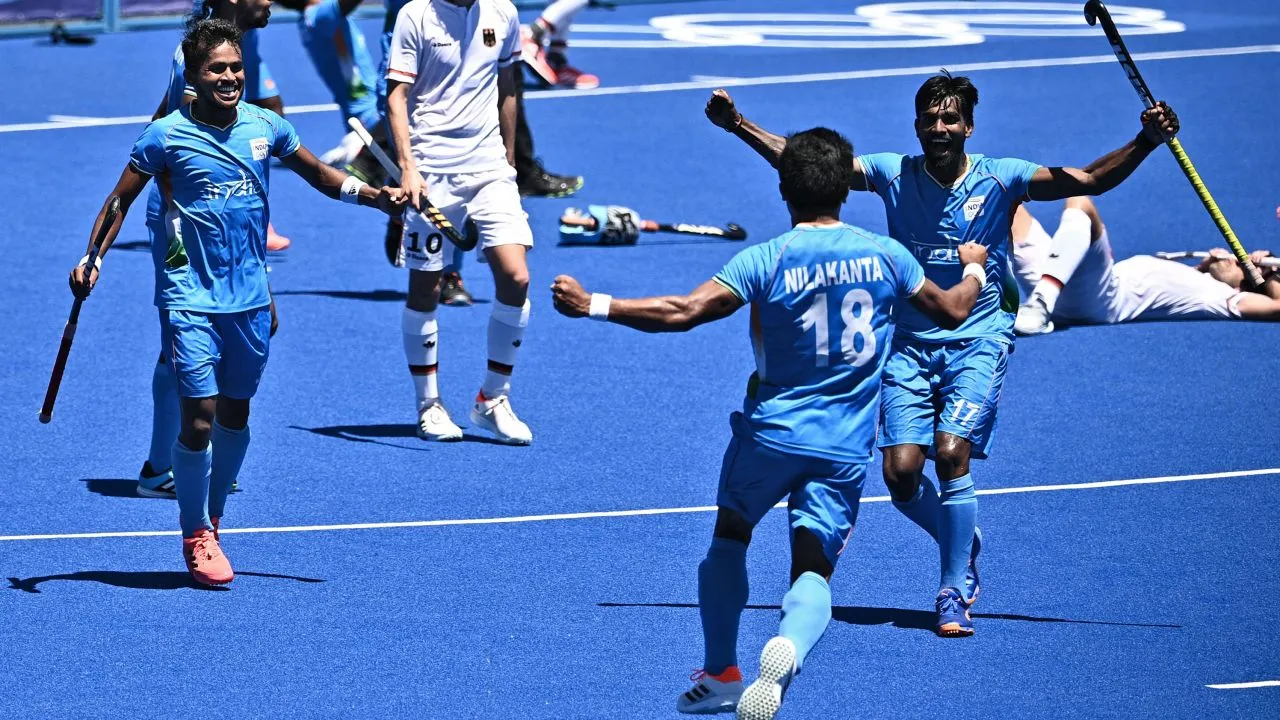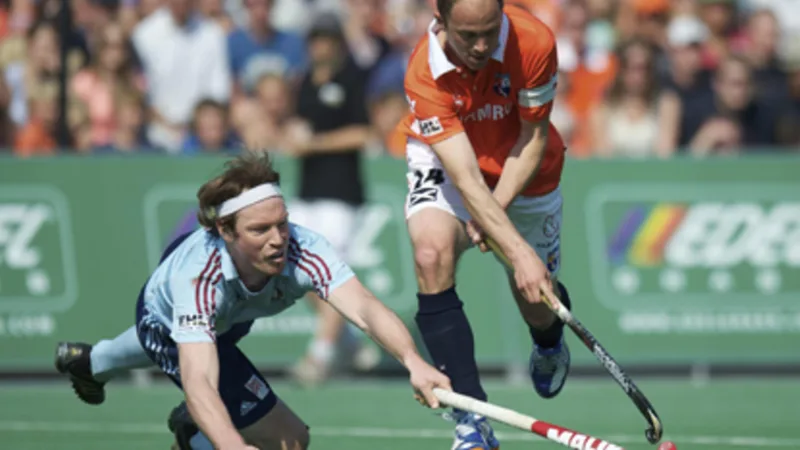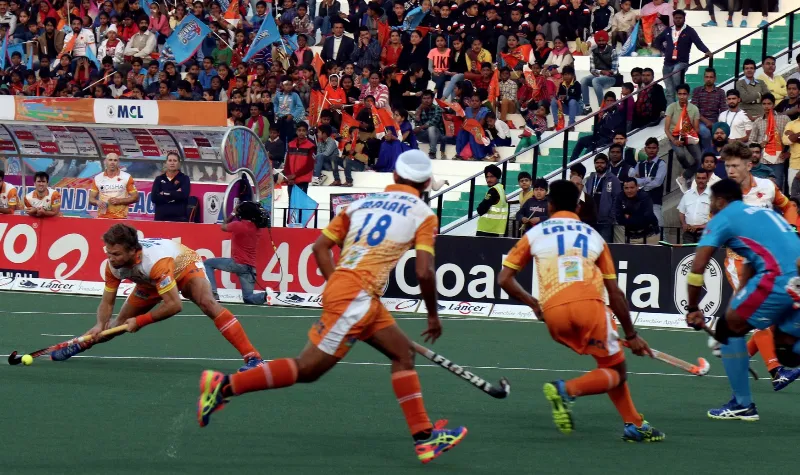Enough is enough, replicate European hockey leagues or be prepared for more failures
An eventful Jan has finally ended. With the culmination of the Hockey World Cup, Europe has again shown the world that to rule any sport, all it takes is the right intent; the continent swept 1-2-3 with Germany coming out as winners, Belgium finishing second, and the Netherlands ending third.

The Indian team flattered to deceive, with only one loss in the entire campaign, yet a ninth-place finish in the end. The crossover match against New Zealand was a classic case of a team crumbling under pressure, squandering away a two-goal lead in the last quarter, to, eventually, lose out in the penalty shootout. Skipper Harmanpreet Singh, who was the best drag-flicker in the world before the start of the tournament - a title he has claimed for almost two years - inexplicably lost his mojo and failed to score when it mattered the most. Hardik Singh, India's new hope in the midfield picked up an injury in the second game against England, while the forward line failed as a whole to convert chances into goals. But is it really the right time for any criticism? Maybe, or maybe not.
While it is clear that one tournament does not decide the quality of the Indian team or the players, it also isn't the time to brush this performance under the carpet. Playing the blame game won't help anyone. But a team that had fought tooth and nail against the Germans in the bronze medal match at the 2020 Tokyo Olympics, clearly did not play its best hockey in Odisha. While the dejected Germans just picked themselves up from there and did the unthinkable, when no one expected them to, the Indian team, to be blunt, lacked that hunger in this World Cup. Without any doubt, there's solid learning here for the team, not only from Germany but all the European nations playing hockey; to get a tighter system in place where the players at each level get to play a good amount of matches, that puts them under pressure and also get a league of our own. Merely sacking the coach or pressurizing them to quit should not even be considered an option.
Since the start of the World Cup in 1971, Europe has had a medalist in every edition. While the Netherlands, Spain, and Germany have been the traditional powerhouses, there has been an emergence of Belgium, which is nothing short of commendable, having played in the last two World Cup finals, to go with as many Olympic finals appearances. Then there is England too, who although have never won a World Cup medal, but featured in three semifinals in the last four editions. And having a strong league structure is the major reason for all the success Europe has seen in hockey, if not all.

 FIH ©
FIH © The Netherlands has had the Men's Hoofdklasse Hockey since the late 1890s, Germany has Men's Feldhockey Bundesliga since 1973, and the Belgian Hockey League was founded way back in 1919. Without fail, each and every player, not only in Europe but other nations too, is a part of one of these leagues. All the players from the top three nations in this World Cup were from these clubs too. Uhlenhorst Mülheim is the most successful German club and their defender Lukas Windfeder and Moritz Ludwig come from this club. As for Rot-Weiss Köln, Thies Prinz, their captain Mats Grambusch, Tom Gambusch, Christopher Rohr, and three others ply their trade there.
Not just local players, but they are a great space for foreign players to grow too. Aussie drag flick legend Blake Govers plays for KHC Dragons, a top-tier club in Belgium, while Tom Craig is a part of Klein Zwitserland in the Netherlands. Defender Matt Dawson plays for Amsterdam. The entire current French roster plays club hockey in Belgium. Unfortunately, it is the Indian team that relies on their rather non-existent departmental tournament only, and none from the squad is in a club outside India.
If all this is not reason enough to have a strong league structure, both for men and women, here's what former India coach Sjoerd Marijne has to say: "These leagues are a very good place to play a match every week, with high intensity, and do what you train for at practice sessions. Here, you have to train for that match, and also mentally prepare yourself for a new opposition every week.
"What happens is, if you're not playing these games, be it in Europe, or any other league in the world, you end up playing only international matches, against the same set of players. But in the league, you have different players, who might not be well-known, so it adds another element. You have to adjust every time you step out to play. And with all these matches, you are just better equipped to handle the pressure situations," Marijne told SportsCafe.
Back in 2013, we did have the Hockey India League, which stopped abruptly in 2017 and still hasn't come back to date. Though Hockey India plans to bring it back this year, but it remains to be seen if it solves the purpose of creating a sustainable supply chain for the national team. Something which the Indian Premier League did exceptionally well for the cricket team. Fundamentally too, HIL seemed to lack in certain areas; the tournament just had six teams, and in all, there was a total of 34 matches in each season. On the other hand, taking the Dutch league's example, each team plays a total of 22 matches spanning a few months.
Playing fewer matches in a league is a bigger problem than it seems. Take the Indian Super League now, India's top football league. Each team plays only 22 matches in a season, while the English Premier League and La Liga have 38 matches per team. In the German Bundesliga, teams play 36 matches in a year. So significantly lower matches do not give enough match time to Indians.
Coming back to the IPL, right from the start it was the place for the Indian hopefuls to play against the national and international stars. They had to fight for a spot in the franchise's playing XI before even thinking about playing for India. Similar is the case with these European leagues in hockey. "We have a lot of foreign players who come and play in the Dutch league, which gives our players a lot of strength. We have Australians, Argentinians, and Belgian guys too...So the players have to be at their best every time they step into the park because the environment around them is so competitive.

 HIL ©
HIL © "You just cannot play on 50% capacity. There are a lot of positions in many teams where many Dutch players find it difficult to play. For instance, Belgian Arthur Van Doren is playing as a free defender for HC Bloemendaal, which is great for the team, but the youth from the Netherlands will have to develop better skills to make it to the team."
Citing the example of the Indian women's hockey team, Marijne explained that while the players started playing well with each other, they did not get quality opposition that easily. Only with the presence of a league, or with Indians traveling abroad can this problem be overcome. "Here in India, I could see the players develop playing against each other, but I could never see how you would play under real stress, due to the lack of leagues and competitive teams. That is of course what happened with the Indian men at the World Cup, and this is what we faced with the women too. So a league is the need of the hour for them."
Only the presence of departmental hockey is not conducive to the growth of the player of the sport either. Surjit Memorial Hockey Tournament, Bombay Gold Cup, Senior Nehru Hockey Tournament, and Beighton Cup make no sense if it is not backed by a league that runs for a fair amount of time in the year. Once again, just having the HIL won't be the solution to the problem. "So the flaw with departmental hockey is that these players are hired by companies to play for them, and get time only to play, say a couple of weeks before the tournament. Otherwise, these players are regular office-goers. In all probability, you're not going to get a new player from there," BJ Kariappa, a senior coach with Hockey India said.
"Also, the players who are in the national camp are not allowed to play in tournaments. It's collateral damage. New players cannot come up, while the existing ones don't get enough match time. The players are skilled and talented, but in matches, they make mistakes which they shouldn't."
Another issue that Kariappa spoke about is the difference in coaching standards in India, for younger players. Since there is no standardised way of training kids, it's just difficult to change the style of play, or the technique of the player once they reach a competitive level. The European leagues provide that kind standardised form of training system right from the start.
"In Europe, all the club coaches, in any age category, will have a similar kind of training, similar kind of structure. So all the clubs follow the same manual and it's easier for the players there to achieve their goals. In my opinion, this league, as and when it comes should be seen and developed in a way that we get all our future stars from there. And the equally important focus should be on ensuring that all players in the country, irrespective of age group receive the same training. HIL, or whatever it will be called can really achieve that, " he concluded.
While what Marijne and Kariappa suggested might not sound like rocket science, somehow we have failed in implementation thus far. Though no one can deny India's superiority in the continent, but a fair way needs to be covered to achieve the kind of dominance we saw in the yesteryears. A fresh start of the HIL could bring new challenges, but they would need to be overcome, and the league will have to stay for long to be able to replicate Europe's success, or it will be deja vu again.
Comments
Sign up or log in to your account to leave comments and reactions
0 Comments